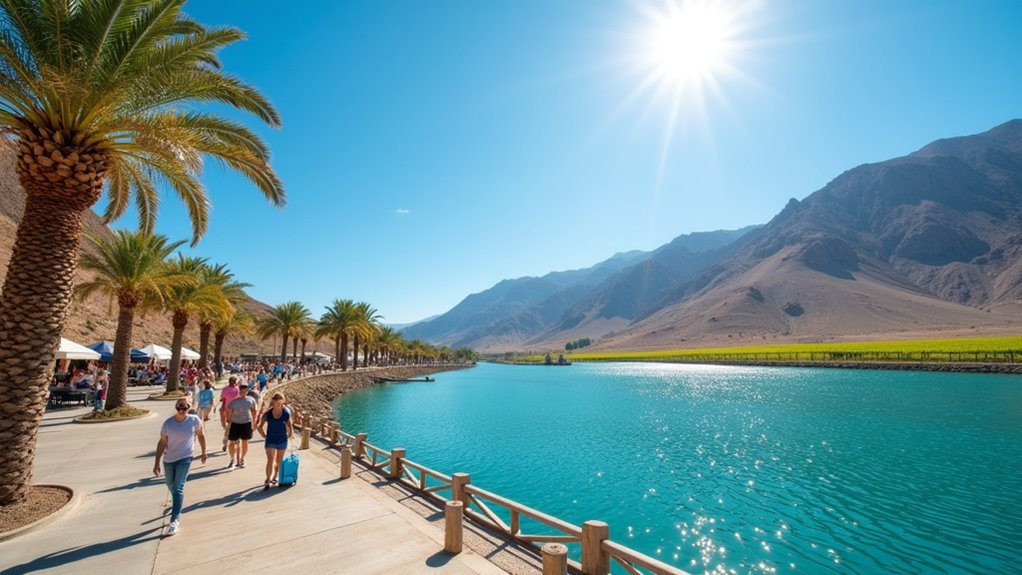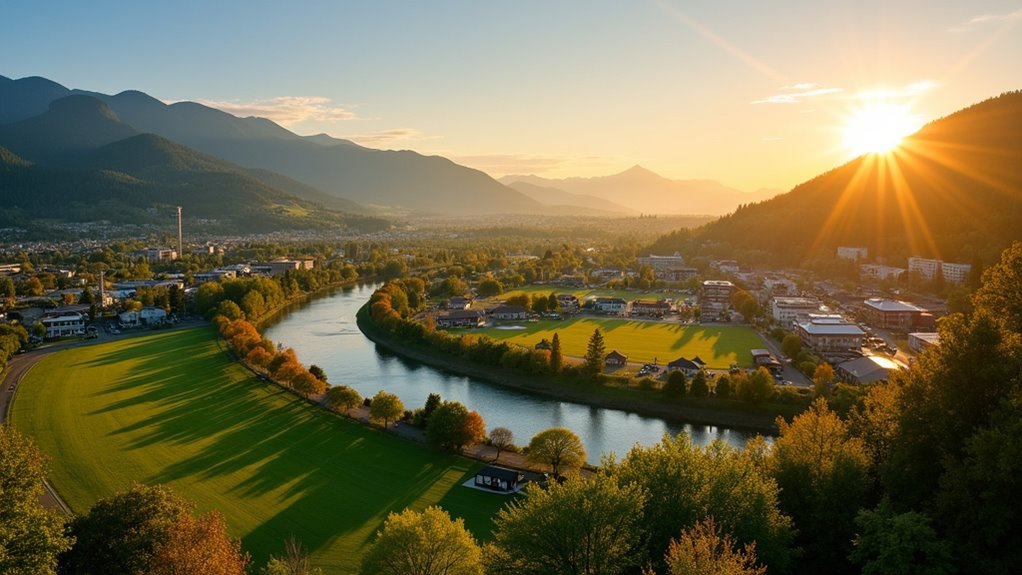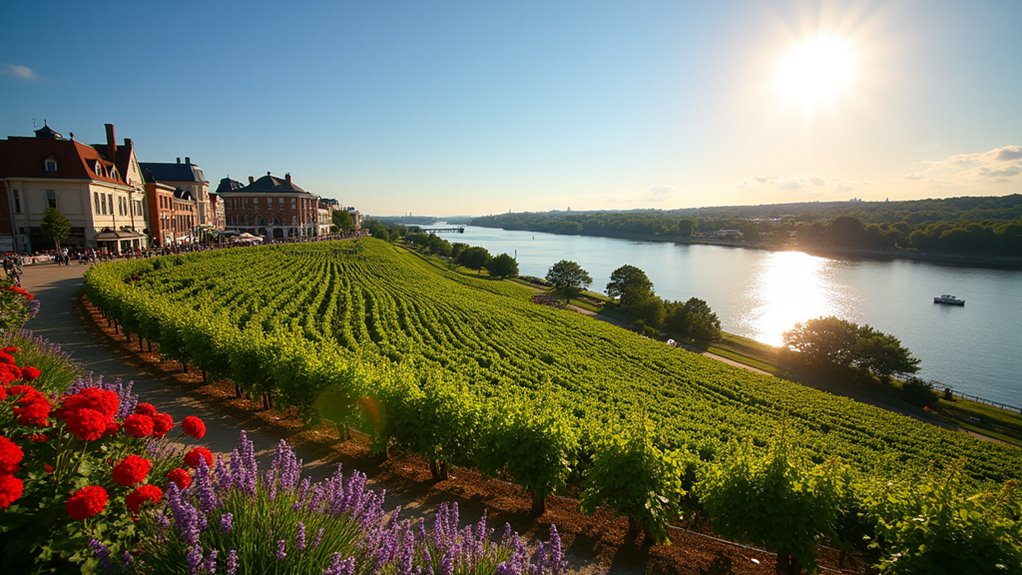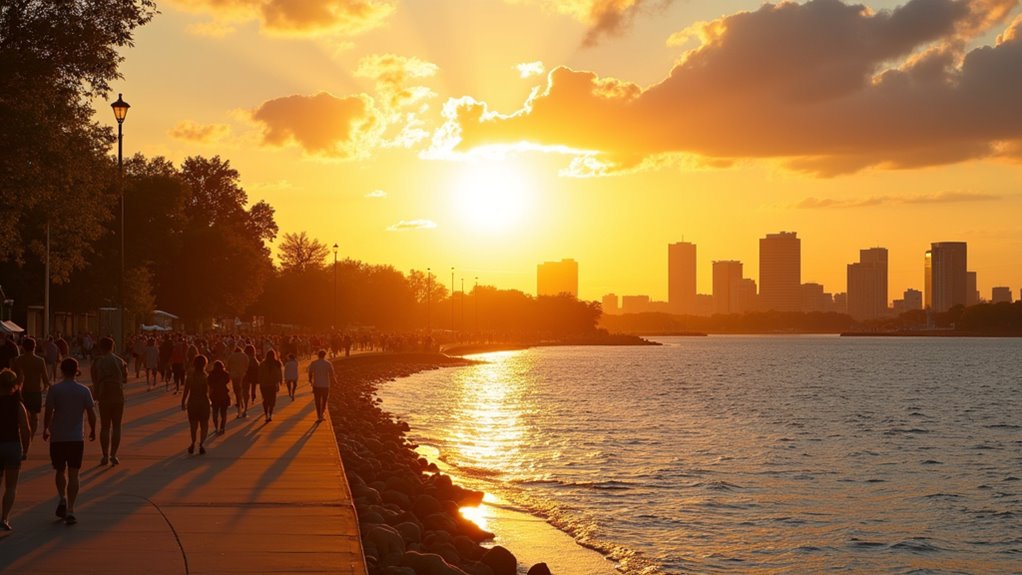Physical Address
304 North Cardinal St.
Dorchester Center, MA 02124
Physical Address
304 North Cardinal St.
Dorchester Center, MA 02124

Looking for Canada's warmest cities? From Victoria's mild winters to Hamilton's hot summers, discover where Canadians escape the cold.
Canada’s warmest cities include Victoria (the mildest year-round), Chilliwack, Vancouver, St. Catharines, Brantford, and Hamilton. Victoria averages 3-21°C, rarely freezing, while BC coastal cities benefit from Pacific Ocean influences. Ontario’s Golden Horseshoe region offers warm summers with temperatures reaching 30°C, though not as mild in winter as BC. From Vancouver’s moderate maritime climate to Hamilton’s lake-influenced summers, these destinations offer distinct Canadian warmth worth exploring further.

While Canada is often associated with cold winters and snow-covered landscapes, several cities across the country enjoy remarkably warm climates throughout the year.
Vancouver leads the pack with its mild maritime climate, where temperatures typically range between 3°C and 21°C annually.
Other British Columbia locations like Nanaimo and Chilliwack benefit from the Pacific Ocean’s moderating influence, with the latter experiencing warmer summers than Victoria.
Kelowna in British Columbia stands out for its semi-arid climate with hot summers that can reach 35°C, making it perfect for enjoying lakes and vineyards.
In Ontario, Windsor and St. Catharines offer warmer conditions, particularly during summer months, though they don’t match BC’s year-round mildness.
Hamilton also enjoys warm summers but experiences colder winters.
Halifax rounds out the list as the Maritime province’s warmest major city, with a more temperate climate than its regional neighbors.
For consistent warmth in Canada, coastal BC cities remain your best bet for year-round comfort and minimal snowfall.
Victoria serves as Canada’s mildest city year-round, boasting an exceptionally moderate climate that rarely ventures below freezing or above sweltering temperatures. You’ll experience annual temperatures ranging from 37°F to 66°F, with only about 15 freezing days per year.
Winters remain mild and rainy with average highs of 8.2°C, while summers stay cool and dry, typically reaching just 19.6°C. Extreme heat above 30°C happens on average just once annually. Residents enjoy a remarkably long growing season lasting approximately 8.6 months from early March through late November.
The city receives about 608mm of annual precipitation, with minimal snowfall. You’ll enjoy approximately 2,223 sunshine hours yearly, with July and August being the sunniest months.
This Mediterranean-type climate makes Victoria unique among Canadian cities, supporting year-round outdoor activities and diverse horticulture.

Moving east from the Pacific coast, you’ll find Chilliwack nestled in British Columbia‘s Fraser Valley about 100 km from Vancouver. This agricultural hub enjoys a notably mild climate compared to most Canadian cities.
July brings average highs of 25°C, while the yearly mean temperature sits at a comfortable 8.7°C. Recent years have shown dramatic warming trends, with December 2024 marking the second warmest on record at 6.23°C—nearly three degrees above normal. While Chilliwack offers a temperate escape, those seeking truly warm waters might prefer Hawaiian snorkeling spots like those found in Lanai.
Climate projections suggest even warmer conditions ahead, with annual temperatures expected to rise 2.2-4.3°C by the 2050s. You’ll experience more hot summer days, with the number of 30°C+ days projected to jump from 8 to 29 annually.
The growing season is lengthening too, with frost-free days increasing markedly. Chilliwack already enjoys an impressive 8.5 month growing season that typically runs from early March to late November, making it ideal for agriculture.
Vancouver functions as a remarkable climate anomaly in the Canadian landscape, with temperatures that rarely dip below freezing even in winter. This coastal city enjoys a mild oceanic climate where August temperatures average 18.2°C, with daily highs often exceeding 22°C.
You’ll experience significant rainfall throughout the year, though July and August remain relatively dry. July is notably the driest month with only 1.3 inches of precipitation. The Pacific Ocean and surrounding mountains create a moderating effect, resulting in smaller temperature extremes than other Canadian regions. December averages a mild 3.9°C, making it the coolest month.
The city’s favorable climate supports year-round outdoor activities and a thriving tourism industry. While occasional heat waves and cold snaps occur, they’re uncommon. Vancouver is widely recognized as one of Canada’s safest metropolitan areas for travelers and residents alike.
Vancouver’s unique microclimate variations mean weather can change quickly, so checking forecasts is always wise when planning activities.

Located in southern Ontario’s Niagara Peninsula, St. Catharines enjoys one of the province’s most favorable climates. You’ll experience mean annual temperatures around 9.7°C (49.4°F), with the warmest season stretching from June to mid-September when daily highs exceed 21°C (70°F).
The city benefits from Lake Ontario’s moderating influence, which tempers both winter lows and summer highs.
Spring arrives steadily, with March averages around 5.5°C (42°F) climbing to a comfortable 25°C (77°F) by June.
Precipitation remains consistent year-round, averaging 1046mm (41.2 inches) annually, while humidity stays moderate between 65-69% during spring months. July stands out as the sunniest month with 11.55 hours daily of sunshine.
Unlike Kentucky where hikers need to watch for venomous snakes during warm weather months, St. Catharines’ trails and parks are generally free of dangerous reptiles.
These climate conditions make St. Catharines ideal for agriculture and outdoor activities, offering you longer warm seasons than most Ontario cities.
Nestled in the heart of Southern Ontario, Brantford offers a climate that’s particularly warmer than many Canadian cities, with an average annual temperature of 8.6°C (47.5°F). You’ll enjoy a warm season lasting nearly four months, with summer temperatures regularly reaching the mid-70s to mid-80s°F.
The city experiences moderate precipitation, with about 949mm annually. July and August see the most rainfall, while snowfall typically occurs December through March. The snowfall period extends from November 14 to April 14, covering approximately five months of the year. If you’re planning a visit, late May through mid-September offers the most comfortable outdoor conditions.
Brantford’s humidity can make summer days feel warmer than the thermometer suggests, but spring and autumn provide pleasant temperatures—ranging from 40°F in early spring to 70°F in early fall—making these seasons ideal for exploring the area’s outdoor attractions. Unlike Hawaiian paradise destinations such as Oahu, Brantford offers distinctly Canadian seasonal variations that give visitors a true taste of the country’s diverse climate.

Just east of Brantford sits Hamilton, another standout in Canada’s temperature rankings. This Golden Horseshoe city enjoys a humid continental climate that’s moderate by Canadian standards, with warm summers that attract outdoor enthusiasts.
You’ll experience average July temperatures around 22°C (71.6°F), with about 18 days annually climbing above 30°C (86°F). The warm season stretches from June to mid-September, when daily highs consistently exceed 21°C (70°F).
Hamilton’s weather pattern includes comfortable June temperatures averaging 24°C (76°F) for highs and 13°C (55°F) for lows. Though the city’s higher elevation and open rural areas can be windier than urban centers, this southern Ontario location remains one of Canada’s warmer spots, making it ideal for summer activities. Unlike planning a Hawaiian getaway where you’d choose between tropical destinations, Hamilton offers a distinctly Canadian warm-weather experience. Water enthusiasts particularly enjoy late summer when Lake Ontario reaches its peak temperature of 72°F in August.
Canada’s warmest cities offer you a refuge from the nation’s famously frigid reputation. While blizzards rage across the prairies, these urban oases maintain milder temperatures year-round. You’ll find both coastal Pacific gems and southern Ontario hotspots on this list, proving Canada’s climate is more diverse than many realize. Whether you’re planning a move or a vacation, these seven cities give you warmth without leaving the Great White North.